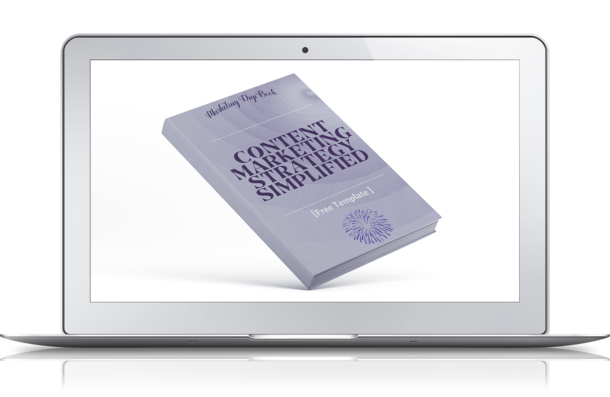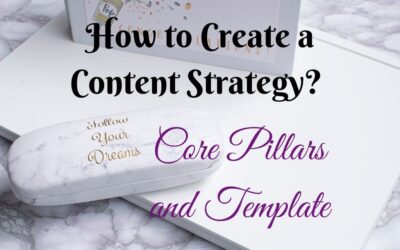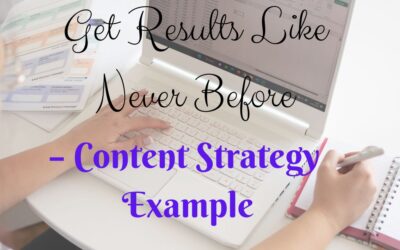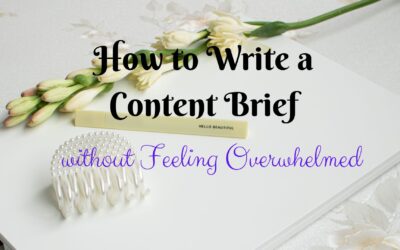The Content Marketing Institute research B2B Content Marketing revealed that 85% of marketers consider higher quality, more efficient content marketing as being the first factor that contributed to their increased success. Thus, how to create quality content remains a tough question.
Disclosure: This article may contain affiliate links. If you decide to make a purchase using one of these links, I’ll make a small commission without impacting the price that you will pay. I recommend just services or products I find useful and that I have tested or currently use.
The aphorism “quality content is king” is by now universally known and in general lines correspond to reality. You cannot contest that content is one of the base pillars of marketing today. Virtually every marketer, writer, or blogger wants engaging content, quality content, interesting content, useful content, viral content… But finally, what’s exactly engaging/interesting/quality content? Which are the parameters that a piece of content should accomplish in order to be classified as such?
Let’s Make Your SEO & Content Work Better for Your Business
Tough question! Because what’s interesting for you, for me might not be, what you call useful a tier might not. So, this is a subjective appreciation. It’s up to the target reader to judge it.
Top performers have dug their way to find out what high-quality content marketing means for their audience and defined it. It’s a path each writer should follow.
Some tactics that can help you build high quality content marketing are the following:
Your Content Should Relate to a Problem or a Desideratum of Your Audience
Each and every piece of your content should be audience-centric, focused on its interests, problems, challenges, or pleasure. It’s your job to define your audience, who you write for, and who’s your buyer persona. Put yourself in your readers’ shoes and depict which are their needs, research, or simply ask them. Validate your ideas with your audience, through a survey, social media, or Quora.
Quality content resonates with your readers and makes them read what you wrote and offers them something valuable to take away. Just give them what they want and need, when they need it, in the form of advice, lists of clear steps, tips, and insights.
“The more you help your readers with what they care about, the more they’ll come back” states Sue Dunlevie from Successful Blogging
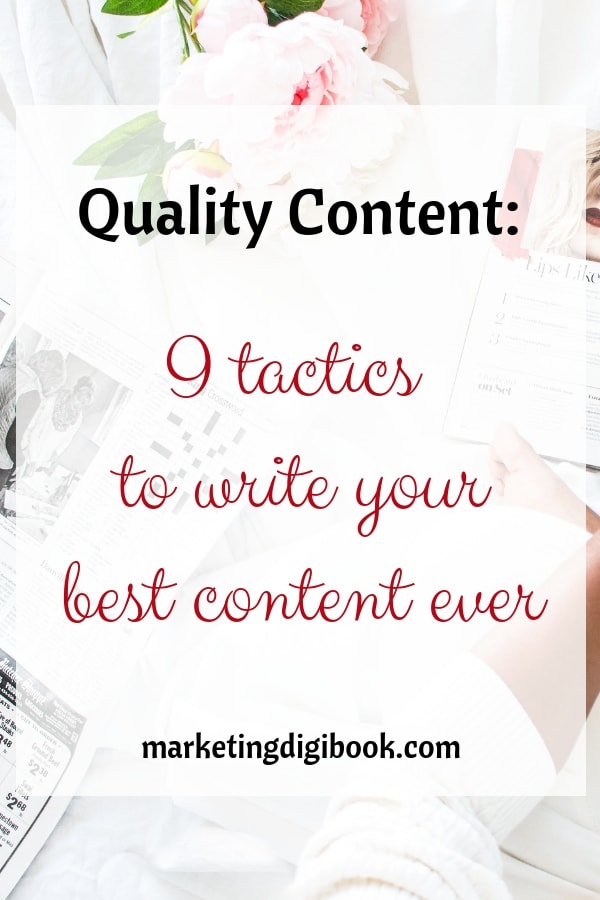
Define Your Audience, Your Buyer Personas
Defining the exact features of your buyer personas has crucial importance for your content quality, as you need a specific person for which to write, whose problems you answer and solve. Before planning content or producing content, it should be clearly established who is the reader of that content. Establish details like gender, age, occupation, struggles, interests…
For example, Buyer Persona Mary: Mompreneur, 30-40 years, 1-3 children, interested in work-life balance and struggling with finance and budgeting
Buyer Persona Lindsay: Entrepreneur, 40-50 years, interested in improving client experience and struggling with content marketing and ROI
Personas help better understand who’s the reader, and the customer and ease the task of tailoring and further personalizing your message. Write for a specific person, not for everyone, not for SEO. Readers/ buyers are real persons looking for answers, for solutions. Your personas should rely on real persons, on details found out during real in-depth interviews and research.
“If you try to write to everyone, you’ll really be writing to no one”
Gina Horkey, HorkeyHandBook
Mark W. Schaefer made research and revealed that 90% of one company’s sales are the result of the action of three to four buyer personas.
Write 1000+ Words of Content
A longer content, in principle, brings extended value to the reader. Now the trend in Inbound Marketing is about to change from 1000 – 2000 words content to 3000 – 10000 words, but that’s mainly for ranking reasons. And, also, it seems that in general people are more likely to return and share long-form articles.
Long-form articles are perceived as having higher authority and lead the reader from simple to complex in the same piece of content, a fact that attracts more readers. Long-form articles are in general highly researched, well-written and comprehensive, they cover integrally a topic and answer all related questions that might arrive. That’s why long-form is considered as having a higher quality, but the longer form doesn’t mean filling words to hit a number. Write a long-form article just when it is meaningful and adds value to the reader.
For the moment the paradigm “the longer, the better” gains momentum! However, a balance should be found, otherwise, we are going to find ourselves quite confused and in a not-so-appealing situation of starting to read a piece of content this year and finishing it the next.
How to Create Quality Content? – Format for Readability
Since visual content equals more interesting, and thus shareable, the format of the content is becoming more and more important. Besides the substance of the content, its structure counts also. A readable design that uses bullet points, lists, images, charts, or infographics makes content much easier to consume.
With such a huge quantity of content published every day, it’s not a surprise that most readers are in fact skimmers, reading about 20 – 28% of the content of a page. So, formatting is an absolute must to attract their attention and keep their interest alive. Large blocks of text are just about to become history.
It’s not enough to have stellar, well-researched content, it should have a great graphic format too. Like in the example below:
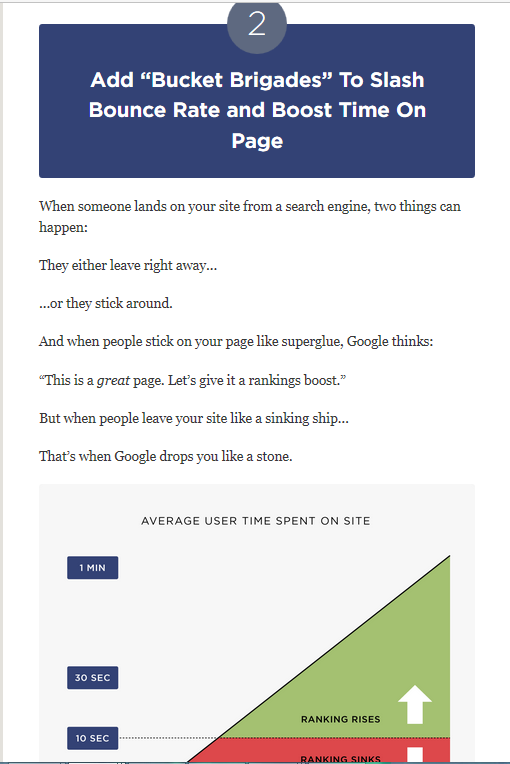
How to Create Quality Content? Use Your Own Voice in a Conversational Manner
Each writer has their own style and voice, so, use yours, don’t try to mimic someone else, the original will always be better than the copy. Be authentic, be you, use your unicity and you’ll find your own audience, the one that enjoys your style. Or as Neil Gaiman stated “The one thing that you have that nobody else has is you. Your voice, your mind, your story, your vision.” This is the differentiation element that will make you stand out.
If my style is academic and somewhat humorous, I will most probably never be able to write in a snappy sarcastic style and be authentic. Pretending or expecting a writer to write on all tones, all voices, and for all niches is amateurish nonsense.
Alicia Honeycutt considers the voice of a writer as being one of the “biggest secrets of professional writers”.
Quality content is one that sounds natural, not like something forced. Writing in a conversational tone, similar to a conversation among friends is by far more engaging for your audience, than using an elevated, academic voice. So, write from your heart, write on their level.
How to Create Quality Content? Support Your Content with Data
These days providing good content is not enough anymore. In order to have high-quality content you need to research and back up your content with data. Facts are important and people enjoy reading facts, thus including them in your content becomes a must. Don’t omit to offer credit to the sources that endorse the cited facts.
High-quality content implies gaining your audience’s trust and establishing a relationship. Gaining and building trust is not as easy as it might appear, but providing value inside your content and having data from valid, authoritative, and recent sources helps achieve this goal. Do your homework and cite reliable sources that are reputed for publishing accurate information. This way your content will gain trust.

Visuals are the first vector of sales.
Use Professional Styled Stock Photography to Promote Your Business.
Exploit the Power of Storytelling
Relating and sharing stories is an essential human activity, we all love good stories and there is no surprise that stories are engaging and delight readers. Storytelling is fundamental to just about everything in our world and the manner in which we communicate, interact and live derives from it.
Use stories to teach lessons in an entertaining way. Use your own experience and speak about problems you encountered to help your audience solve similar challenges. Speak about inspiring stories of leaders and inspirational persons. Tell stories about other persons achievements and success.
As Bryan Eisenberg says: “Effective content marketing is about mastering the art of storytelling. Facts tell, but stories sell“.
Most often great content equals a great story.
Measure the Success of Your Content
High-quality content translates into traffic, engagement, sales, and ROI. Numbers and metrics will give you the exact measure of your success if your content has the desired quality. High-quality content attracts the target audience and converts it into leads and sales. Track and measure the results your content brings with tools like Google Analytics, SimilarWeb, or Open Web Analytics.
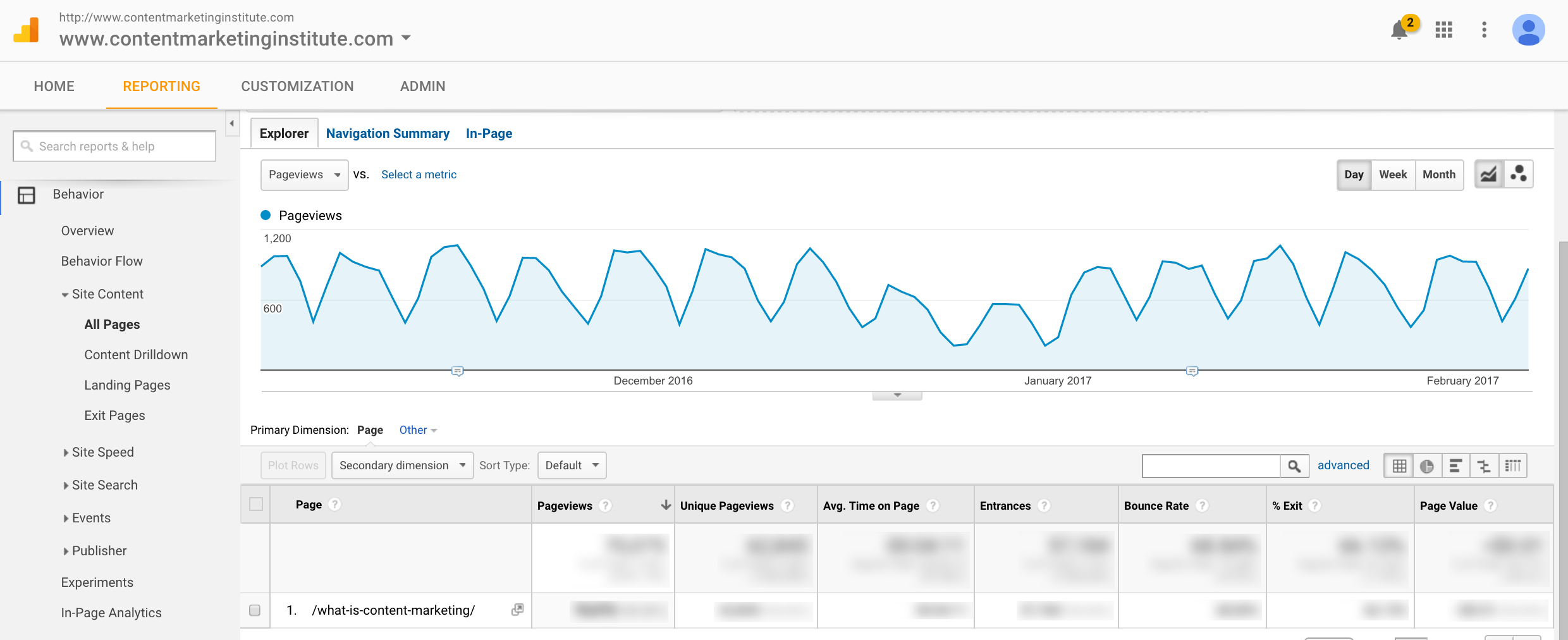
Your audience judges the quality of your content and metrics are the real proof. It’s your job to permanently watch your metrics, measure your progress and modify your strategy accordingly if the results are not as expected. Engagement, shares, and likes are important but leads, sales, and return on investment (ROI) are even more important.
But content is a mix of art and science, parts can be measured as for example engagement, partly not exactly as for example style and aesthetic.
Draw a Conclusion
Be helpful till the end and do the whole work for the audience, write a synthesis and formulate a conclusion for your content. Collect and provide supplementary resources concerning that subject for your audience.
In my conception, the above-listed tactics combined generate high-quality content marketing. What’s your opinion, what do you consider high-quality content? How would you create quality content? What tactics would you add up to this list?

